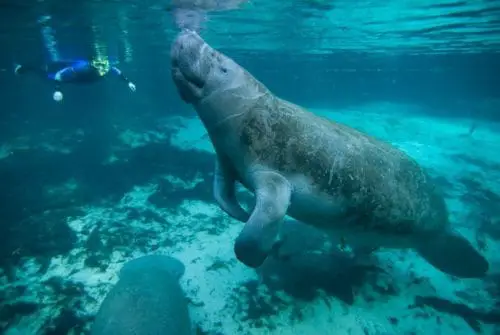
Hiking Over 4,000m in the Andes – How to Prepare for Thin Air!
Adventure Is Calling

Climbing your first 4,000-meter mountain (in summer) is no different than any other adventurous goal – it’s closer than you think if you simply do some training and work up, up, up to it!

Guide At a Glance
- Is this author an Adventurer?
- Is this Guide based on experience?
Your Next Quest
What you need to know before you go!
Even the most seasoned and athletic hill walker may find mountaineering in the Andes intimidating, but it doesn’t have to be. The Andes, a 7,000-kilometer-long mountain range, are South America’s sturdy spine. It runs from Patagonia’s icy reaches in the far south to the Caribbean in the north, and spreads out to 700 kilometers in some areas.
Having its tallest peaks reach heights of nearly 6,000 meters, any journey here would require crossing passes, plateaus, and strange landscapes. To prepare for the imminently thin air in your hiking adventure in the Andes, here’s my strategy to reaching the summit of your ideal peak.
How do you go summer mountaineering in the Andes?
Hiking is a lengthy, strenuous trek in the countryside, typically on trails or pathways. During the seventeenth century, walking for pleasure became popular in Europe. Religious pilgrimages have been around for a long time, but typically include traveling great distances for a spiritual reason connected with particular faiths.
Now, hiking is more than just a religious adventure. In fact, it is considered to be one of the most popular recreational activities especially if you want to unravel the world’s most mesmerizing views. There is no physical strain for hikers since they may walk as long as they wish until they stroll amid hills or mountains.
However, this is not the case when hiking the Andes. This traverses the length of Patagonia, providing countless climbing opportunities. The Patagonian Andes, which stretch from Bariloche to El Chaltén in Argentina and Coyhaique to Torres del Paine in Chile, are a treasure trove for climbers looking for quiet, solitude, and adventure.
Even as a non-professional climber, you have the opportunity to be climbing alongside fantastic climbers. Because the routes are so varied in complexity, you can keep going and going. It makes you want to come back and climb more, learn more, and be around the people who know so much.
Seeing the region’s granite and ice spires in person ignites climbing fantasies. Adventure stirs—a thrilling mix of dread and excitement—as she stands among the glaciers, alpine lakes, and verdant forests at the foot of her unique and alluring peaks.
Unexplored peaks can be found all over the Andes. Its immensity, remoteness, and climate whims result in excellent routes and unconquered summits.
Teach me your ways!
Well, how do you prepare for your hiking adventure in the Andes? Just follow these tips to get started:
1. Begin slowly and choose the appropriate path for your fitness level
2. Become acquainted with the path
3. Examine the weather
4. Tell someone where you’ll be and when you’ll be there
5. Pack your necessities
6. Wear the proper shoes and socks
7. Put on a successful outfit
8. Keep things simple
Need some inspiration?
Still undecided?
PROS
- A once-in-a-lifetime opportunity for adventure.
- Beautiful scenery.
- A chance to meet amazing people.
CONS
- Takes time to prepare for the climb.
- Requires professional gear.
- Individual needs to be physically ready to climb.
Inspire
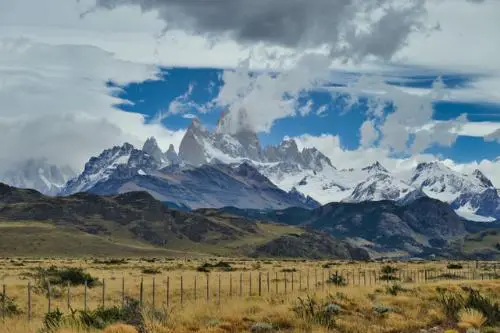

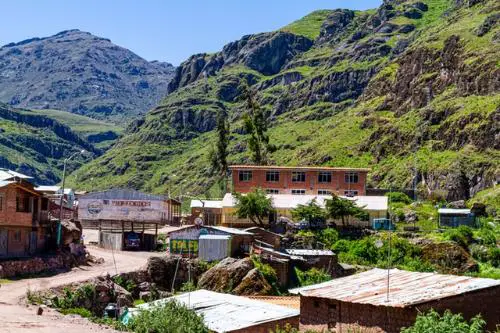

Where and When to Go?
Biome
Over it’s 7,000 km range, the Andes encapsulates dozens of biomes, from steppe plains to thick rainforest jungle to glaciated peaks.
The easier summer mountaineering routes in the Andes tend to be clustered in the central-northern region of the range, in the high peaks of Argentina, Boliva, Peru, and Ecuador.
Season
The rainy season in the Andes is from November to March, and the Inca Trail closes for renovations in February, the wettest month of the year.
The greatest season to visit the Andes is from May to October, when the weather is cooler (especially further south) but dry, with the best possibility of blue sky and stunning views. This is also a fantastic time to explore the Amazon if you’re planning a trip to the region.
If you continue south to Patagonia, however, the far south almost completely shuts down for the southern hemisphere winter.
Regions
Trekking is one of the best ways to experience the breathtaking Andes. There are treks for people of various abilities, ranging from easy day walks to strenuous 12-day excursions. The Inca Trail to Machu Picchu is the most famous, but Peru offers a range of hikes, some of which visit lesser-known Inca monuments.
Mount Aconcagua in Argentina is the tallest peak in the Andes, the highest in South America, and indeed the highest mountain in the world outside of the Himalayas.
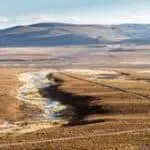
Altiplano
Many easy 4,000m peaks are in the Cordillera Real mountain range of the Altiplano Andean Plateau, centered on Bolivia. The average base elevation of the plateau is 3,750 m! The Altiplano is wide, flat, and wind-eroded, with large salt flats and steppe plains popular for llama herding. The Cordillera Real offers dozens upon dozens of glaciated granite peaks easily accessible from host cities like El Alto, La Paz, Oruro, and Puno.

Cordillera Oriental
Home to the famous Macchu Picchu trail in Peru, the Cordillera Oriental covers a great deal of Colombia. With its close proximity to the Amazonian basin, Caribbean and Pacific Ocean, the mountains tend to be wetter and more lush. The lower foothills are thick rainforests, rising into cloud forests, sub-alpine tundra and even glaciers!
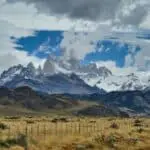
Patagonia
Home to the famed Torres Del Paine National Park in Chile, Patagonia is literally the edge of the earth. Best suited for experienced mountaineers, Patagonia is home to many of the world’s foremost technical traverses and climbs, such as the Fitz Roy Traverse.
Essential Outdoor Skills
What outdoor and survival skills should I master before embarking?
Hiking is, for the most part, walking. It is possible for almost anybody to do it and enhance their mind and body via exercise, fresh air, and open spaces. There are certain specialized talents that may come in useful in specific circumstances that you may face when trekking. Take a few minutes to read up, and you may find that you enjoy your next hiking adventure a little more.
Maintain a Pace
Hiking the Andes mountains can be a very difficult adventure, so you have to learn the fundamentals of hiking pace, relaxing, and rhythm. A slow hike is 1.2 mph; a medium hike is 1.5 mph; a fast hike is 2.0 mph or faster.
Getting Over the Waters
Crossing rivers and streams should be done with caution, or not at all.
High Elevation
The Andes mountains are no exception to high altitudes, so prepare for hikes over 3,000 meters by knowing the symptoms of HAPE and HACE. Hydrate yourself!
Inconsistent Weather
Mountain weather can be unpredictable, so it’s ideal to be prepared before your Andes hike. Check the weather religiously before your trip, and stay off exposed ridges during the afternoon.
Never Leave a Trace
Pay close attention to the environmental effect you have. Learn how to reduce the impact of your passage across the land, especially above the treeline.
Filtering Water
Because backcountry water hasn’t been treated, you’ll need to filter it to prevent water-borne diseases like Giardia. To disinfect the water, put it to a boil for one minute or use an iodine solution.
Numbers to remember
Safety & Risk
Is this adventure for you?
Mountaineering is a skill that takes a lot of patience to master. Let’s face it: no one can expect to complete a mountain climb in a short period of time; reaching the summit necessitates sound decision-making and a high level of self-control.
The risks of mountain climbing are very real, and they can happen anytime when there’s a lack of preparation made by the hiker. The most common dangers you’ll encounter when climbing include falling, avalanche danger, exposure to the weather, and altitude sickness.
Mountain climbers must be disciplined enough to work through challenges and barriers while remaining calm and composed, even when faced with perilous and/or unexpected situations. Similarly, you must be disciplined in order to attain your professional and personal objectives.
A high level of focus is also required to maintain safety in your hike. Climbers may have the added incentive of not dying to assist them in reaching the summit, but when it comes to achieving personal and professional goals, unexpected failures and seemingly insurmountable difficulties might be enough to crush your optimism.
- Watch for HAPE and HACE!
- Don't get lost. Bring a GPS.
- Avoid a sprained ankle.
DO'S
- Follow the rules.
- Pack your gear properly.
- Listen to more experienced climbers.
DONT'S!
- Venture out on your own.
- Push yourself if you’re not feeling well.
- Go to dangerous places if you’re not ready.
Wildlife
What animals can I expect to encounter?
- South American gray fox
- Llama and alpaca
- Chincilla
- Andean Condor
- Bespectacled bear
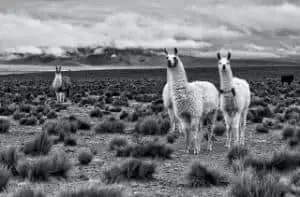


Fitness & Training
What is the recommended level of fitness?
Mountaineering fitness necessitates a high overall level of physical conditioning. Climbing at various degrees of effort and navigating difficult terrain, frequently while carrying a heavy pack and at high elevations, need both aerobic and motor fitness.
The more fit you are, the more effectively you can acclimatize (i.e., adapt) to altitude. Simply said, fit climbers use less energy on specific activities (for example, a day of hard climbing), allowing their bodies to prepare for the job of acclimatization.
Training and preparation exercise regimen
Given the time limitations imposed by weather, route conditions, objective dangers, and the impacts of altitude, training objectives are essential. Proper physical training enables you to perform better by climbing longer, stronger, and quicker, to be more comfortable on steeper and more difficult terrain, to carry larger loads, to recover more rapidly at rest, and to enjoy the whole trip more fully.
The amount of preparation required varies greatly depending on your location and planned trekking path. I would get in shape and bring coca tablets to assist counteract the effects of altitude on the climbs to Machu Picchu (Dead Women’s Pass is 4,200m).
The W Trek in Patagonia, on the other hand, is largely under 1,000 meters in elevation, so it’s more like a mountain hike in the United Kingdom. In any case, you must be prepared for changing mountain weather by wearing the appropriate clothing and equipment.
Gear Guide
What gear do I need for this trip?
Required Gear
- Jacket made of polar fleece (wool sweater may be used but not recommended). Gore tex or comparable windproof/waterproof breathable jacket. Jacket with down feathers (optional but may be very useful during the cold nights and for trekking or mountaineering trips).
- Pants. Pants with a regular fit (better if they can transform to shorts). Pants made of polar fleece (optional but may be useful during the cold nights and for trekking or mountaineering trips).
- Underwear. Top and bottom are both long (synthetic mid weight thermal underwear better).
- Socks. For trekking or mountaineering adventures, thick wool socks are advised.
- Shirt. Long-sleeved shirts are advised for the highlands to avoid sunburn (also helpful when traveling to the jungle to avoid being bitten by mosquitoes).
- Footwear is very important. For regular travel, lightweight boots or shoes are recommended.
- Hat. For the night, use a polar fleece headband, a wool cap, or a balaclava, and for the day, wear a sun hat with a brim.
Supporting Gear
- Bag for sleeping. Down sleeping bags are recommended for travel in the highlands, whereas synthetic sleeping bags are recommended for travel. Liner for sleeping bag and compression stuff sack (optional but may be useful).
- Mat for sleeping. Foam and air mattresses are two options that come highly recommended.
- Backpack. Carry your basics in a 30-40 liter daypack. For the rest of your belongings, utilize a 70-90 liter backpack or a medium-sized duffel soft-sided bag (also useful when porters or animals have to carry your staff; in this case a padlock is recommended).
- Tent. A high-quality 4-season nylon double-wall tent designed for high winds!
- Fuel and stoves. Fire kindling will often not be available. Use a portable fuel-powered cooking stove.
Accessories & Apps
If you want to take your Andes hiking adventure to the next level, bring a portable charger with you. Phone batteries expire quicker while they are looking for a signal or using GPS applications. Both of these things happen often when hiking!
Also, if you’re trekking in a wildlife-rich region, you’ll want to pack binoculars! Keep your distance from animals at all times, although binoculars may be a wonderful way to view wildlife up close.
Finances & Budget
What are the costs associated with this adventure?
Gear & Products
Price:
There are so many various gear choices available these days that you may personalize your equipment to fit your budget – to a point. To fully equip oneself with new backpacking gear for your next trip, you should expect to spend between $1000 and $5000 on average.
Food & Nutrition
Price:
Food will cost between $8 to $60 a day per person on average. It all depends on what you want to eat while you are camping, the equipment you will use to prepare your food, and how many people are in your camp. Food will cost between $5 and $10 each meal on the low end.
Transportation
Price:
From New York, the costs range from USD 1000 to 1500. Purchase your ticket at least a couple months in advance. Flight ticket from the United Kingdom to Buenos Aires. Lastly, flying from London starts at £800. Flights from Buenos Aires to Mendoza start at USD 120.
Accommodations
Price:
The cost of accommodation in hiking the Andes mountains depends on the place you’re staying in. You should be good with a budget of around $14 to $1,000, and you’re definitely getting the accommodation you’re paying for.
Miscellaneous
Price:
In most cases, you should factor in some extra costs. The cost of an ascending permit for the Normal Route at Macchu Picchu varies from US$ 291 to US$ 800, depending on the season and your nationality. You must process it in person in the city of Mendoza prior to the ascent. The majority of guides will offer to assist you with this.
Savings Tips
Here are some tips for you to save up for your upcoming Andes hike:
- Join a national club. Make your initial visit to your national mountain club. They are available in almost every country and provide training, guidance, gear rental, discounts, and forums where you can ask for help, partner up, and share the expenses of a new experience.
- Reduce the cost of books. Knowledge is power, but you don’t have to spend a lot of money on brand-new books; outdated versions may frequently be found for a cheap price on Amazon. Beginners should purchase Freedom of the Hills, the “manual of mountaineering,” and if you’re brushing up on a route, look for particular guidance on local internet sites.
- Develop your own abilities. By investing in classes to get formally qualified, you may avoid using guides entirely and save thousands of dollars. Just make sure you pick a task you can handle and know when to back off. Pushing yourself beyond your limits is just as dangerous as climbing with no prior expertise.
Insider Tips
Here's what most people don't know!
These are some tips most hikers don’t know, and you’ll be needing these for your next Andes hiking adventure:
- Long backpacking excursions require more planning, food, larger loads, and time away from creature comforts. For all of these reasons, camping only one night on your first backpacking trip will be a more pleasant experience (max two).
- High-quality backpacking gear may be costly, and you may not have enough money to purchase everything you need for your first trip. You may be able to borrow stuff if you go with an experienced traveler.
- The key to being comfortable on the trail is to keep your body temperature stable so that you are neither too cold or too hot for extended periods of time. With warm weather, you may backpack in shorts and a synthetic short-sleeve shirt.



